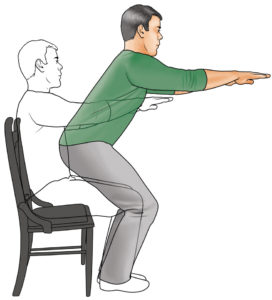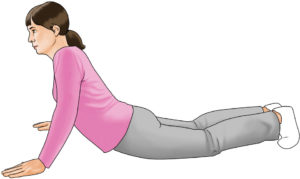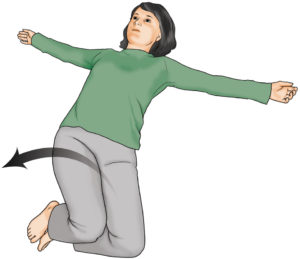Core Exercises for Elderly: Staying in Charge
They’re a key component for aging adults: core exercises for elderly individuals to promote healthier, more mobile independence.
Everything begins with the core. Core muscles stabilize segments of the body, act as a shock absorbor for the whole body, maintain functional (working) posture, and allow for motions such as flexion and rotation. Improving your core through regular resistance exercises, experts pledge, can improve overall mobility. Core exercises for elderly individuals in particular can promote healthier, more mobile independence.
What is “core fitness”? We define the core as the muscles of the hips, pelvis, abdomen, and trunk. Whether you’re sitting or standing as you read this, you’re using core muscles to maintain good posture. If you’re slumping or slouching as you sit or stand, a weak or unbalanced core is probably the problem.
When you rise to a standing position, the core gets you started. When you stand, turn, bend, reach, twist, stoop, carry something, maintain your balance, walk, jog, swim, or participate in any physical activity, the action begins from the center of your body and moves out to your arms and legs.
Core Exercises for Elderly and Young People are Key to Mobility
Core fitness is at the center, literally and figuratively, of strength and power. The most important muscles are those in the hips, trunk, shoulders, and neck— the core. They’re involved in every aspect of daily living. Whether you’re sitting or standing, you’re using core muscles to maintain good posture. Core muscles are necessary for flexibility, strength, and injury prevention. A well-planned program of balance and mobility fits in perfectly with a routine that includes core exercises for elderly as well as young people.
Within the core muscle group, trunk muscle strength is associated with improved balance, daily functions, and prevention of falls. A review of 20 studies investigated the associations between trunk muscle composition and balance, functional performance, and falls in older adults as well as the effects of core strength training and Pilates exercises on those variables. Small to medium correlations existed in both.
The study’s authors concluded that core strength training and/or Pilates exercises can be used as an adjunct or even alternative to traditional balance and/or resistance programs for older adults. Both types are easy to administer in a group setting or in individual programs because little equipment and space are needed to perform the exercises.
The Core and Flexibility
Beyond simply allowing or supporting certain movements, the core is necessary for flexibility, strength, and injury prevention. Flexibility is the ability to move joints through a range of motion. Weak or tight muscles limit flexibility; strong muscles enhance it.
In middle-aged and older adults, tight (less flexible) hamstrings and hip flexor muscles often affect muscles of the core, including those in the buttocks, pelvis, and lower back.
Some sample exercise routines to strengthen core muscles follow. For more exercises, download our free guide called Easy Exercises: How seniors can improve stability and core strength and prevent falls.
SEMI-SITS
- Stand in front of a chair, feet hip-width apart.
- Engage your abdominal muscles by gently pulling them in and up.
- Slowly lower your buttocks and bend your knees as though you are going to sit.
- Instead, touch the chair seat lightly and return to a standing position.
- Work up to 8-10 repetitions, 2-3 sets
- Variation for beginners and older adults. Lower your buttocks just a few inches instead of going far enough to touch the chair seat. Restrict the number of repetitions to 4-5 and the number of sets to 1-2
MODIFIED PUSH-UPS
- Lie on your stomach, palms near your shoulders.
- Slowly move your head, neck, shoulders, and upper core upward, keeping your head up, and looking ahead.
- Lift upward until your arms are fully extended. Avoid arching your neck.
- Work up to 8-10 repetitions, 2-3 sets.
- Variation for beginners and older adults: Restrict the distance your torso moves upward by not fully extending your arms.
LUMBAR ROTATION
- Lie on your back, legs bent, knees together and on the floor at your left side, and arms extended outward. Try to keep your shoulders grounded.
- Engage your abs (in and up), keep your upper body still, and slowly roll your knees from the left to the right until they touch the floor, or come as close to the floor as possible without lifting your shoulders.
- Hold for a few seconds, breathe easily, then roll your legs to the opposite side to complete one repetition.
- Variation for beginners and older adults: Reduce the number of reps to each side and/or the number of sets. Take 3-4 deep breaths after each rep.
Originally published in 2016, this post is regularly updated.





 Keep Walking to Lower Your Depression Risk
Keep Walking to Lower Your Depression Risk  Exercises For Mobility
Exercises For Mobility  Living with Dementia Means Having a Greater Fall Risk
Living with Dementia Means Having a Greater Fall Risk 
Anything you can do to help your core aids fitness, and especially balance, elsewhere.
Photo: Dreamstime.com